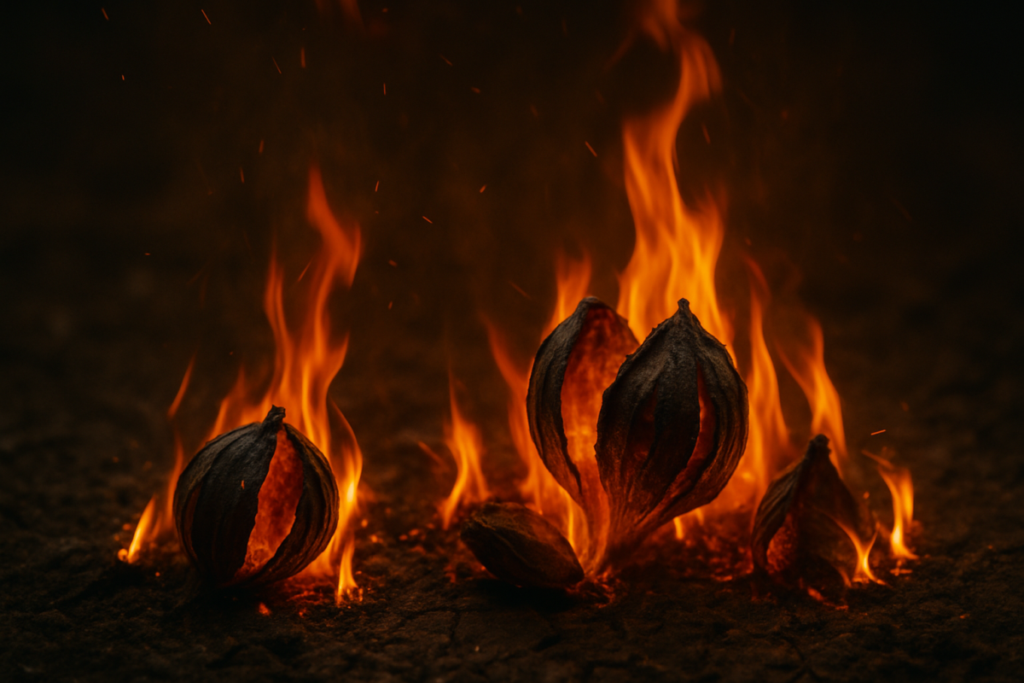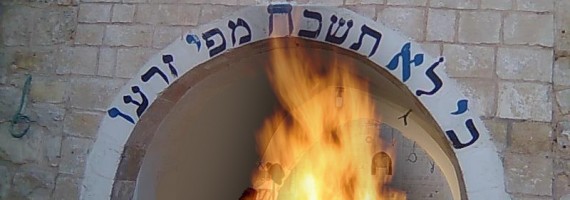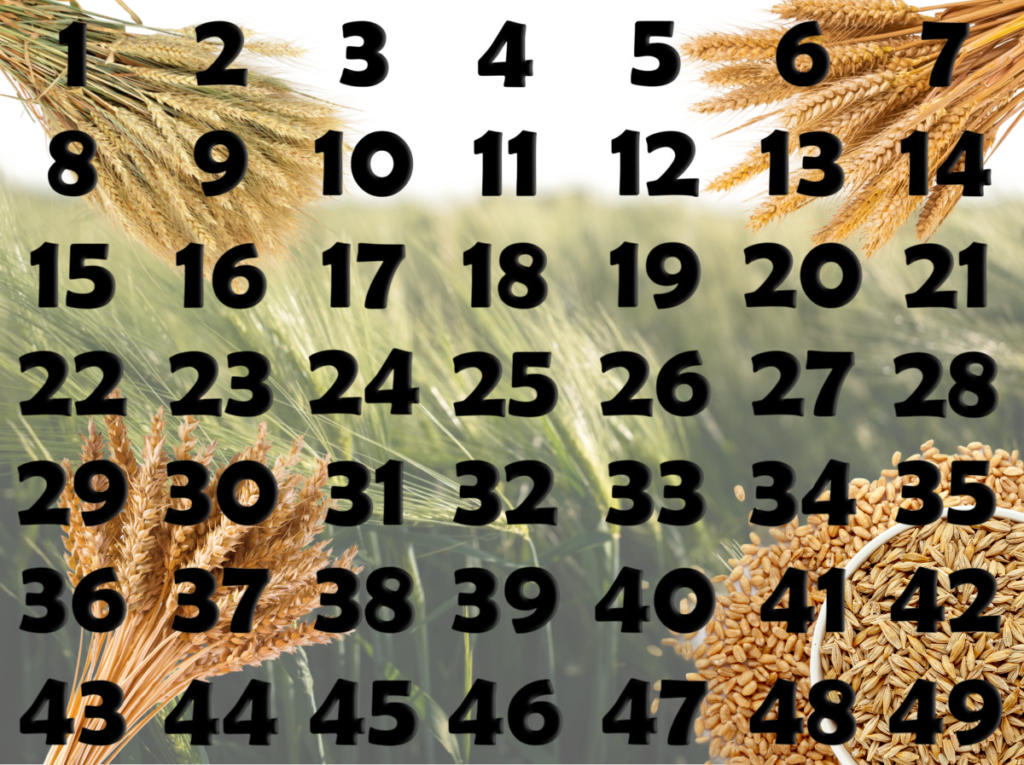Shavuos was one of the three fixed times of the year when Breslover Chassidim came to the Rebbe. Therefore, in recent years it has become common for many Breslovers travel to Uman to spend Shavuos near the Rebbe’s tziyun.
*
However, in Reb Noson’s day, his talmidim used to travel to him for Shavuos. They would try to arrive in time to conclude the counting of sefiras ha-‘omer together on the night of Erev Shavuos. One such occasion was Shavuos of 1834, when some eighty followers came to Reb Noson in Breslov. They prayed with such fervor that ever since, Breslover Chassidim refer to this as “der groiser Shavuos.“ (See Rabbi Chaim Kramer, “Through Fire and Water,” chap. 33, pp. 366-377)
*
Rabbi Levi Yitzchak Bender mentioned that during Reb Noson’s time, when the Breslover Chassidim who had come from far and wide counted the sefirah together on the night before Shavuos, virtually the whole city used to come to witness their fervor. This was an annual event that everyone looked forward to. (Heard from Rabbi Avraham Moshe Wasilski)
*
In the Tzefas community, most Breslover Chassidim wear a white caftan on Shavuos at night and during Shacharis-Musaf. However, they do not wear this caftan for Minchah (see above, “Hoshanah Rabbah”). (Heard from Rabbi Yitzchok Kenig)
*
In Tzefas, the Breslover shul is decorated with greenery, following the common minhag.
The Steipler Gaon mentioned that in the Ukraine it was customary to spread grasses and small twigs on the entire floor of the shul. (Orchos Rabbenu, vol. II, Bnei Brak 1992, p. 99, sec. 7)
*
Reb Noson darshans on the minhag of eating dairy foods on Shavuos. (See Likkutei Halakhos, Birkhos ha-Torah 1; Masa U-Matan 4:6; ‘Eruvei Techumin 5:13; Shavu’os 1:4, 2:2; Devarim ha-Yotziyim Min ha-Chai 2:2 and 7; Simanei Behemah ve-Chayah Tehorah 4:40, 46; Mezuzah 2:4)
*
In Tzefas, as in most communities, the minhag is to eat milchigs after davenning Shacharis, during the Kiddush. However, the day meal is fleishig. (Heard from Rabbi Yitzchak Kenig)
*
Breslover Chassidim commonly remain awake all night and recite the Tikkun Leyl Shavuos of the ARI zal. In the Tzefas community, the chaburah recites the Tikkun in unison, and the Chassidim recite Kaddish and dance after concluding the Chumash, Nach, Mishnayos, etc.
Reb Noson states that the main parts of Tikkun Leyl Shavuos are TaNaKh and Mishnayos. (Although the ARI zal omits the Mishnayos, the Shelah ha-Kadosh includes them.) (Likkutei Halakhos, Kriyas ha-Torah 6:26)
*
In a letter to Rabbi Avraham Jacobovitch, Rabbi Shmuel Horowitz writes: “Remaining awake on the night of Shavuos gives life to all of one’s conduct for the entire year, both spiritually and physically. One should rejoice, for this is the ‘wedding’ of Matan Torah — and one should rededicate himself to the study of the Rebbe’s teachings, which are a chiddush niflah, a wondrous innovation that comes from the Future World, from [the Torah of] ‘Atika Setimah [the Hidden Ancient One], destined to be revealed in time to come…” (Rabbi Shmuel Horowitz, Michtevei Shmuel [Jerusalem: Keren R’ Yisrael Dov Odesser, first edition], Letter 2, p. 14; cf. Reb Noson’s description of the Rebbe’s teachings at the beginning of his Hakdamah to Likkutei Moharan.)
*
The Terhovitza Maggid, a close talmid of the Rebbe and a prominent Chassidic leader in his own right, and Reb Menachem Nochum of Chernobyl, author the classic Chassidic work Me’or Einayim, always used to take turns visiting each other to celebrate Shavuos. On Shavuos night, they would dance with each other in ecstasy all night long. When Reb Nochum grew too old and weak to continue, he sent his son Reb Mordechai of Chernobyl to the Terhovitza Maggid for Shavuos, and they, too, danced all night. (Rabbi Shmuel Horowitz, Michtevei Shmuel [Jerusalem: Keren R’ Yisrael Dov Odesser, first edition], Letter 64, p. 201)
Rabbi Shmuel Horowitz states that on Shavuos in Uman, the Chassidim took turns dancing all through the night. Thus, one group was always reciting the Tikkun and another was always dancing. (Rabbi Shmuel Horowitz, Michtevei Shmuel [Jerusalem: Keren R’ Yisrael Dov Odesser, first edition], Letter 54, p. 190; ibid. Letter 64, p. 201)
*
By contrast, Rabbi Levi Yitzchak Bender recalled that the Breslover Chassidim in Uman recited the Tikkun Leyl Shavuos, as is customary, and then danced for a long time. On one occasion, Reb Borukh Getche’s danced with the members of his chaburah all night until it was time to get ready for Shacharis. (Si’ach Sarfei Kodesh V, 303)
*
Rabbi Nachman Burshteyn heard that in Uman, it was primarily the ‘ovdim who danced at such length on Shavuos night. Most of the ‘olam simply recited the Tikkun.
*
In Katamon, they used to dance after each of the three or four “kaddeishim” in the course of reading the Tikkun. (Heard from Rabbi Nachman Burshteyn)
*
The melody for “Atah Nigleisa” that we sing on Shavuos night came from Reb Borukh’l of Medzhibuzh, who sang it on Shabbos evening to “Eishes Chayil” – while the melody we sing to “Eishes Chayil,” Reb Borukh’l sang to “Atah Nigleisa.” However, the Rebbe switched them. (Heard from Rabbi Nachman Burshteyn)
Just before alos ha-shachar, one immerses in the mikveh. Kabbalistically, this mikveh represents the Fiftieth Gate, and is the source of holiness of all immersions in the mikveh throughout the year. (Likkutei Moharan I, 56:7; Rabbi Shmuel Horowitz, Michtevei Shmuel [Jerusalem: Keren R’ Yisrael Dov Odesser, first edition], Letter 64, p. 201; Rabbi Chaim Vital, Pri Eitz Chaim, Seder Leyl Shavuos)
As mentioned above, Shavuos is one of the five times that the tzibbur davens ki-vasikin. (Oral Tradition)
*
Rabbi Levi Yitzchak Bender stated that throughout the Ukraine, including in Breslover communities, it was customary to omit the yotzros on the first day of Shavuos, but to recite them on the second day. In Breslov communities in Eretz Yisrael today, yotzros are recited during chazoras ha-sha”tz on Shavuos. (See Si’ach Sarfei Kodesh IV, 463)
*
In America, the Borough Park Breslov congregation recites yotzros so on both days.
*
Rabbi Nachman greatly praised the medieval poem “Akdamus Milin” and the regal melody with which it is sung. This remains a highlight of the Shavuos davening in Breslover shuls today. It is our custom that each stanza is sung by both the chazzan and the congregation, not by alternating stanzas, as in some communities. (See Sichos ha-Ran 256)
Reb Avraham used to sing a melody without words prior to Akdamus, and extend and embellish the stanzas with various melodic phrases as he recited them. (Heard from Rabbi Nachman Burshteyn)
*
(See Likkutei Halakhos, Birkhas ha-Shachar 5:18, 52; Kriyas Shema’ 5:17; Birkhas ha-Peyros 5:22; et al. This custom is mentioned in Machzor Vitry, based on a midrash in Pesikta Zutra (Midrash Rus); see Likkutei Maharich III, p. 579.)
*
Reb Gedaliah told Reb Aharon Waxler that one should say “shnei se’irim le-khaper” during the Musaf of Shavuos, as in the Musaf of Rosh Hashanah. (Heard from Rabbi Aharon Waxler. Cf. Siddur Baal ha-Tanya, ad loc.)
*
Shavuos is the yahrtzeit of the holy Baal Shem Tov, founder of the Chassidic movement, and the Rebbe’s great-grandfather. Therefore, it is a custom of Chassidim in general to mention a teaching from the Baal Shem Tov, or at least to mention him on Shavuos.
Used with permission by Rabbi Dovid Sears – http://www.nachalnovea.com/breslovcenter/









